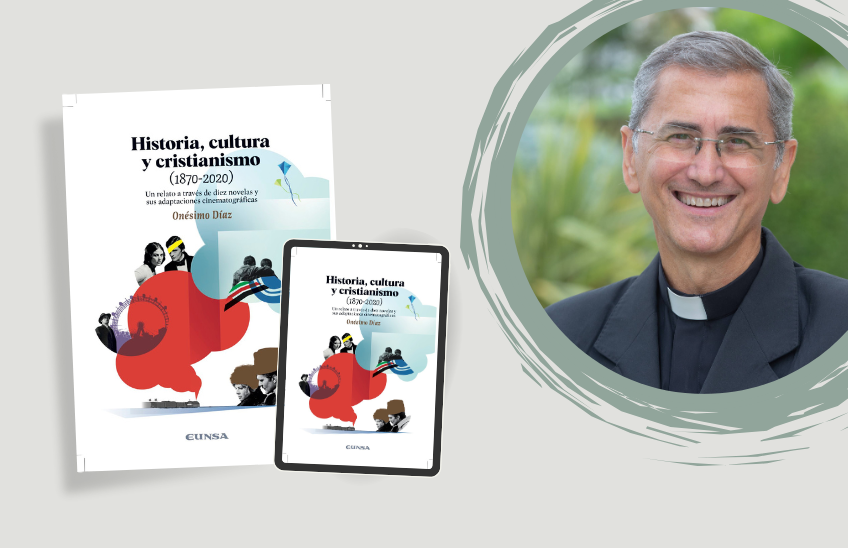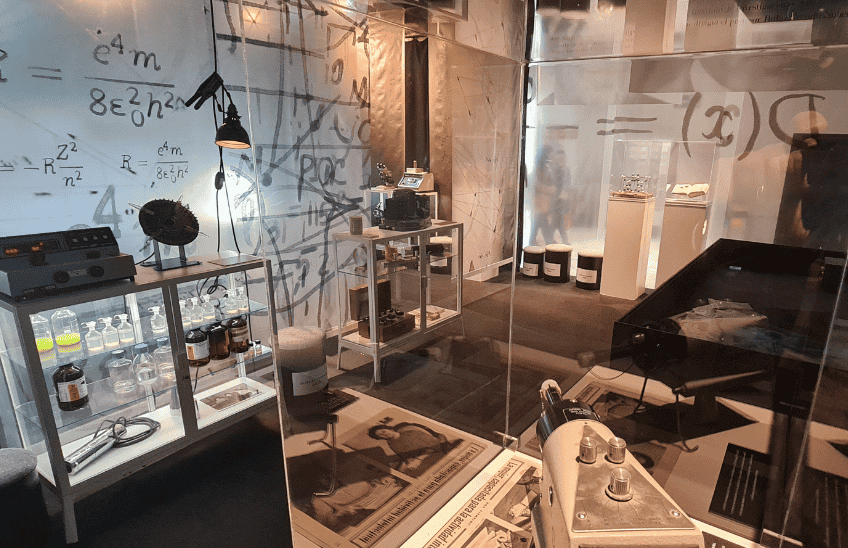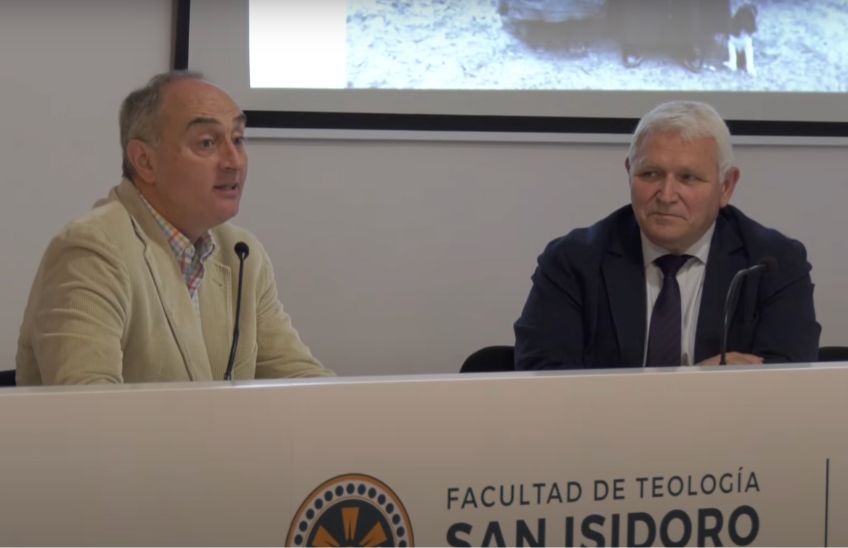The first steps of women in Opus Dei (1930-1950)
In this interview, Beatriz Comella Gutiérez, historian and professor of the Universidad Nacional de Education a Distancia, takes us into the first steps of women in Opus Dei during the 1930s to 1950s in Spain. Comella analyzes three fundamental moments in this history, highlighting the social and educational dynamics that influenced the pioneering women of this institution.

03 | 10 | 2023
How was the message of Opus Dei received among Spanish women?
Opus Dei's message experienced a gradual beginning among women. During the 1930s in Spain, women found themselves in a social status that limited their freedom to participate in events and make independent decisions. Frequently, single women were required to be accompanied by a sister or other person when attend attending social events or performing any activity, in addition to apply for permissions in general to the father or older brother.
As for the first women who approached Opus Dei, we can identify three periods core topic. The first of these took place before the Spanish Civil War; the second during the Civil War, when a few women joined the Work; and finally, beginning in the 1940s, with the start of the first women's center. During these early years, growth was modest; for example, by 1946, there were only 29 women belonging to the institution, compared to the more than 500 men who were part of Opus Dei.

Beatriz Comella Gutiérrez, historian and professor of the Universidad Nacional de Education a Distancia.
What were the profiles partner-occupational profiles of the first women in Opus Dei?
The first women who approached Opus Dei during this period presented a diversity of profiles. For the most part, they were what used to be called "daughters of the family," that is, single women who were economically dependent on their parents or older siblings. This dependence lasted until they reached the age of majority at 25 or else they took marital status, which meant getting married or joining a religious order.
In this context, the first women who approached the Work in the 1930s had heterogeneous profiles. Among them was Carmen Cuervo, a Madrilenian with a degree in Philosophy and letters, and a teacher at high school de la Asunción, located near board of trustees de Santa Isabel in Madrid, where the founder of the Work was President. However, this young woman later won a civil service examination as inspector of work, moved from Madrid and lost contact with the institution.
Others had primary programs of study . Two of them were seriously ill and died early. I am referring to María Ignacia García Escobar, from Córdoba, who had programs of study primary and General Culture and died in 33 in the Hospital del Rey. The other was Antonia Sierra, a married Basque woman with a daughter. She was admitted to the General Hospital of Madrid, located next to board of trustees of Santa Isabel.
In addition to these experiences, among the women who joined Opus Dei were a teacher, a young woman who studied piano at the Madrid Conservatory, an employee at a German business and some who had studied programs of study in dressmaking. Others worked in small family businesses. However, among all these women, only one maintained a continuous relationship with Opus Dei: Dolores Fisac, who had programs of study primary education and knowledge in General Culture.

In the foreground, Guadalupe Ortíz de Landázuri and María Isabel Pérez. Behind them, Raquel Botella, María Teresa Aranguren, Pilar Apodaca, María Rosario Arellano and Roser Martí. Photograph taken at residency program Abando, Bilbao (1947).
The profiles of these women largely reflected the status of Spanish women in that pre-war period. It is important to note that only 22% of the women in Spain completed the high school diploma between the 1930s and 1940s. Although there were female teachers and some women who later studied magisterio or other intermediate level programs of study such as commerce, typing, arts and crafts, nursing and midwifery, having the high school diploma higher education, which prepared for university, was not common.
On the other hand, with respect to young university women, it should be noted that in Spain between 1930 and 1939, their percentage was 8.9%. In the case of women who belonged to Opus Dei at that time, there were three university women: Carmen Cuervo, Dolores Jiménez Vargas and Carmen Munárriz. This percentage was modified in the post-war years. It is known that in 1948 Opus Dei had about 35 numeraries, of which 10 of them were university students of various degrees: medicine, Chemistry, Philosophy of letters, Philology classical. At that time, the proportion of women university students in Spain was 13.2%; applying the percentage, it can be concluded that the women in the institution, between 1940 and the beginning of the 1950s, surpassed the level of their colleagues.
What activities or initiatives were carried out by the first women of Opus Dei?
Before the Civil War, the relationship of the first women of Opus Dei with the institution was centered mainly on the spiritual direction provided by the founder, Josemaría Escrivá. He also gave some classes of Christian training at board of trustees of Santa Isabel and in an academy facilitated by Father Póveda, a friend of the founder and director of the Teresian Sisters. In these meetings, one of the assistants was in charge of transcribing the teachings, allowing the material to reach those who were in hospitals.
In addition to these activities, the first women of Opus Dei carried out catechesis in the suburbs of Madrid. It is important to note that at that time, in the Spanish capital, there was a belt of peripheral neighborhoods characterized by poverty, lack of Education and little religious instruction. To address this status, some institutions such as the Damas Apostólicas and the Conferences of St. Vincent de Paul offered catechesis in parishes in these neighborhoods, thus contributing to the religious training of the local community.
Were there any changes in the activities of Opus Dei women after the opening of the first center in 1942?
Definitely, with the opening of the first women's center of Opus Dei in 1942, significant changes took place in the activities that these women developed within the institution. From the beginning, the founder, Josemaría Escrivá, gave them a broad vision of what women were to become within the Work.

Living room in the center of Jorge Manrique street.
A relevant testimony is that of Ramona Sanchez Elvira, prior to 1936, who related that the Founder explained to them that the Work would be "an instrument in the midst of the world for many people to find holiness, a path open to single people, married, widows, young, old, rich, poor...He explained to us that they would work in all class of activities:
fashion workshops, ministries, universities, institutes". In other words, the Founder's vision was broad.
training In 1942, Encarnación Ortega, one of the first women who lived in that first women's center located on Jorge Manrique Street in Madrid, also shared the vision that Josemaría Escrivá transmitted to them: "the women would promote farms for peasant women, professional centers for women, university residences, activities in the field of fashion, clinics, bookstores and libraries.
These testimonies seem to me to be representative of the founder's idea of the role of women in Opus Dei.
What subject activities were promoted in the center of Jorge Manrique Street?
The women of Opus Dei focused primarily on promote means of Christian training for young people. This included organizing study circles, meditations and retreat courses. Many of these women were friends, sisters of male members of Opus Dei or participated in male activities within the institution.
In addition to these spiritual activities, the women continued to provide catechesis in outlying neighborhoods of Madrid. This work helped to address the lack of religious instruction in these communities.
During the same period, some of these women started a project publishing house . This project was led by María Jiménez Salas, a woman with a strong intellectual interest who worked at the committee Superior de Investigaciones Científicas. Although María Jiménez Salas was not a member of Opus Dei, she had knowledge from the institution. The founder of Opus Dei encouraged her, along with other young women in the institution, to carry out this project publishing house , which they called "publishing house Minerva".
Despite its short duration and the publication of a limited issue of books, this publishing house left its mark. Its trajectory has been the subject of a study by Professor Mercedes Montero. It is interesting to note the context in which this project began, marked by the post-war years, when obtaining paper and resources was especially difficult.
Were the activities carried out by the women of Opus Dei similar to those of other Catholic institutions or associations of the time, such as the Teresian Sisters, Catholic Action or others?
In some respects, the activities of Opus Dei women bore some relation to those of other Catholic institutions or associations of the time. During the post-war period in Spain, home schools became a successful activity among Spanish women. These schools were offered both by the women's section of the Spanish Falange and by confessional organizations, such as Catholic Action.
Both Opus Dei and these other institutions had home school programs. This approach on the domestic training and the role of wife and mother was widely promoted during the post-war period, largely due to the high mortality during the war and the need to protect and strengthen families, from agreement with the Catholic statement of core values .
Despite these similarities in the general objectives, there were differences in the spirit and implementation of these activities. At that time, all Spanish women between the ages of 17 and 35 were required to attend fill in home courses, which were run by the women's section of the Falange. These courses were a prerequisite for enrolling in university, obtaining a passport or traveling outside Spain.
I have had the opportunity to interview women who studied in home and art schools promoted by Opus Dei members such as Llar in Barcelona and Montelar in Madrid. The interviewees have emphasized that these schools had a higher level educational and a more refined atmosphere compared to other similar institutions. They offered high quality cooking classes, as well as courses in applied arts and decoration, which enriched the women's training with a approach at Education and development staff .



